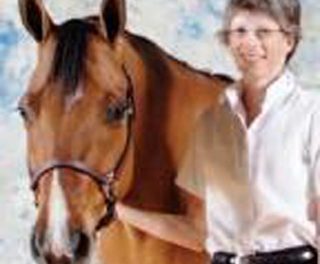 Saddle fit is important and affects your horse’s comfort and your safety. This month, we will cover saddling tips including safety, adjustments, fit, and position.
Saddle fit is important and affects your horse’s comfort and your safety. This month, we will cover saddling tips including safety, adjustments, fit, and position.
I’ll start by talking about how I like to leave my saddle when I take it off. I think it’s important to leave the saddle with the cinches and breast collar buckled up neatly on the off side, everything out of the way and not dragging on the ground. Not only is this neat, but it keeps your equipment clean since your cinches are not going to be dragging in the dirt when you pick up the saddle and it keeps the cinches from flying around and hitting your friends or your horse when you swing the saddle up onto your horse’s back.
When you are getting ready to saddle your horse, you will want to be sure that you have brushed him to remove any loose hair or dirt from the saddle and cinch area. I like to put the lead rope in the crook of my arm nearest the horse, and run my hand gently but firmly over both sides of his back and cinch area to check for soreness. Also, I like to roach my horse’s mane just over his withers, to keep the hair from pulling under the pad.
When you are placing your saddle pad make sure it is well forward over the withers to protect them. There should be a little pad behind the saddle – it is more important to have ample padding in front. The pad is likely to slide back slightly as you ride, but a pad won’t work its way forward!
Saddling will be much easier if you allow momentum to work in your favor as you swing the saddle up on your horse’s back. Hold the saddle by the back of the seat with your right hand, with the fleece towards you. Stand with your left hip at your horse’s left shoulder, facing towards his tail. Use your left hand on the front of the saddle to guide, not to lift. Now, in one smooth motion, lift as if you are bringing the knuckles of your right hand up towards your nose as you rotate your body and swing the saddle up onto your horse’s back, settling it gently into place. This may take practice, but you will be surprised at how easy it is once you get the hang of it.
Once your saddle is in position, grab the center of your pad at the front and back of the saddle, and lift it up into the gullet. This sets the saddle nicely and also creates a pocket for airflow along the horse’s spine. I like natural fiber pads and cinches, and I usually use a wool pad and a mohair cinch.
Saddle fit is important. If you look at the front edge of your saddle as it sits on your horse’s back, it should fall flush along the horse’s body. If you see a pinch point, the saddle is either too narrow or too wide. If it is too narrow, you will see the pinch point low. If it is too wide, the pinch point will be high. A saddle that is too wide is not a big deal. You can always add padding to make it fit correctly. However, a narrow saddle is not good. There is nothing you can do to help that, it’s like a shoe that is too small. So, I prefer to go wide and pad to correct any fit problems when I am selecting a saddle for my horse.
When you are ready to cinch up your horse, let your cinches down and check for length. Your front cinch should fall to the middle of the cannon bone on your horse’s front leg. If it does, it will be about the right length when you go to take it up on the other side. Start with the front cinch, wrapping the latigo as many times as you need to. I believe everyone should know how to tie a latigo knot, but that said, I usually use the buckle to fasten my cinch. Tighten the cinch until it is snug but not too tight, and then pull the latigo loops straight out towards you to snug up the buckle. Your back cinch should be snug, too. Many people let their back cinch hang loose, but that is a safety hazard. I have seen horses going through brush with a loose back cinch, and you can get sticks stuck through the back cinch and jab your horse. There is no reason for a loose back cinch and I do not recommend it. The back cinch needs to keep the back of the saddle down if there is pressure on the horn (if you are roping and dally up to the horn) and it also keeps the back of the saddle down when you are going down a steep hill. It does its job much better if it is snug. The breast collar should be snug, as well. It should not be so tight that it chokes your horse, but it is important to have it snug enough that it can do its job. It is especially important to have the strap that runs to the cinch between the horse’s front legs adjusted correctly. If it is too loose, your breast collar can ride up and interfere with your horse’s wind pipe.
Finally, take your time saddling. Be careful and follow the same step by step saddling process every time. Make sure your pad is always square and even under your saddle. Your horse will be much more comfortable if you take your time when saddling him and make sure everything is adjusted correctly before getting on to ride.
Enjoy your horses and until next time, may God bless the trails you ride.
For more information on Ken McNabb’s programs call us at 307-645-3149 or go to www.kenmcnabb.com.



